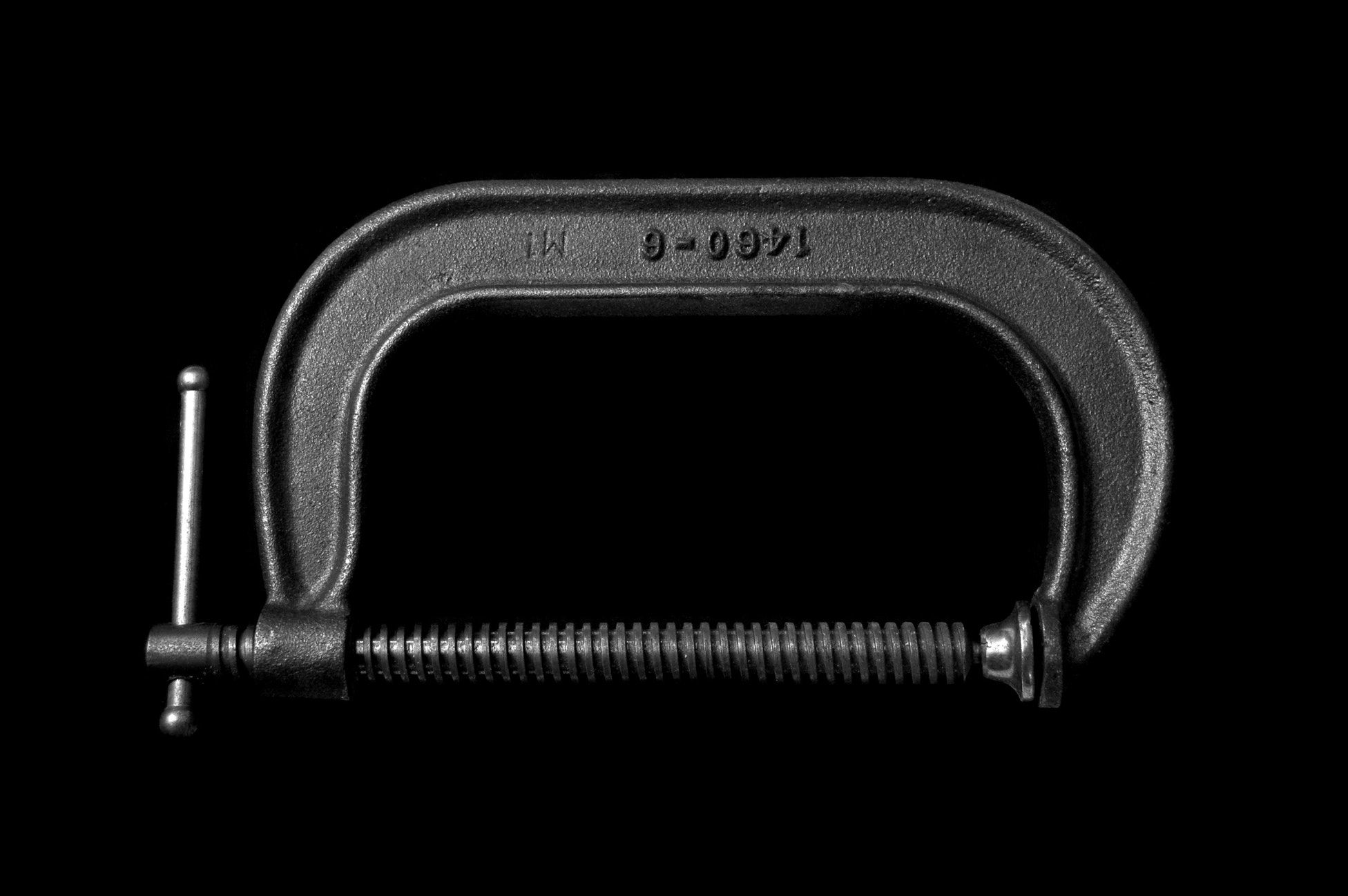If you’re new to woodworking, you may be familiar with clamping pieces together to secure them and make work easier. However, there are a few different clamp types out there, and the right one makes all the difference. Let’s walk through a few different types, when they’re most useful, and what features to look for at the store.
Spring Clamps
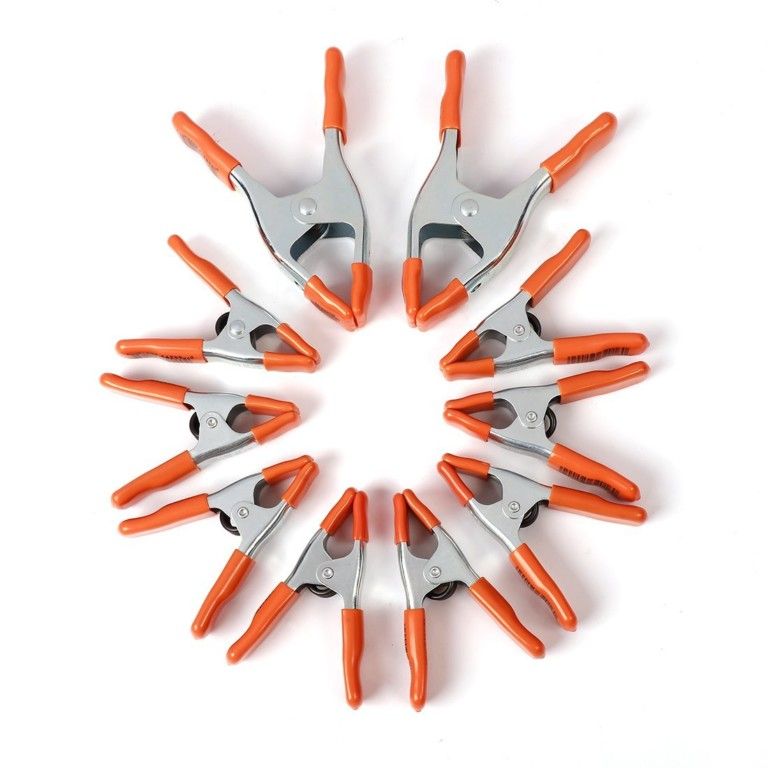
Spring clamps are sometimes called pinch clamps. These versatile, budget-friendly tools can be operated with one hand. You can find them in various sizes, typically from 1 to 4 inches in jaw capacity.
Spring clamps aren’t the best option for heavy-duty tasks, but don’t discount just how valuable they can be in your toolbox. You might use them to hold drop cloths and tarps down during painting or keep small parts together as glue dries. They can even come in handy to organize cords and cables in your workspace.
Quick Clamps
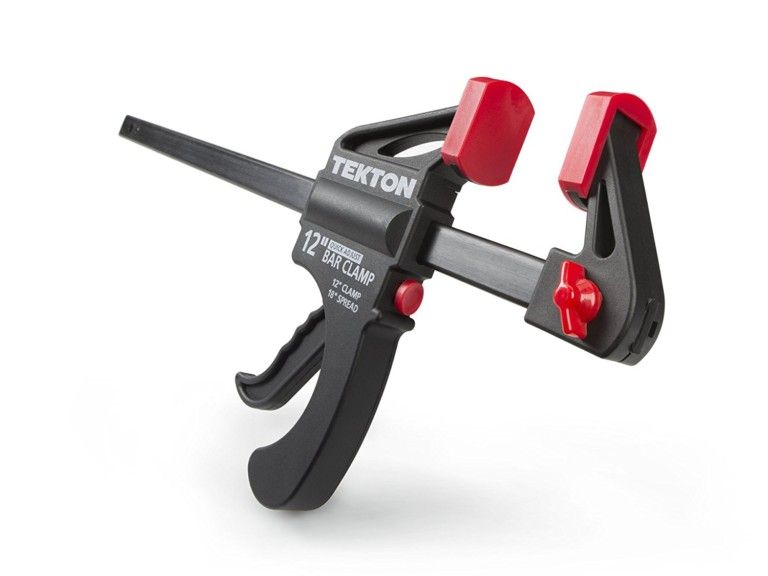
Like spring clamps, you can operate quick clamps with one hand. These tools have rubber jaws on a metal bar, which you control with a hand press and release lever.
These clamps can help you hold wood in place for drilling and cutting on your workbench or sawhorses, as well as gluing projects that are a bit larger. Many models also feature reversible jaws, which you can use as spreaders to push apart pieces.
We recommend looking for a quick clamp with an ergonomic handle. If you have sensitive skin or joints, this can help reduce strain as you secure your pieces.
Pipe Clamps
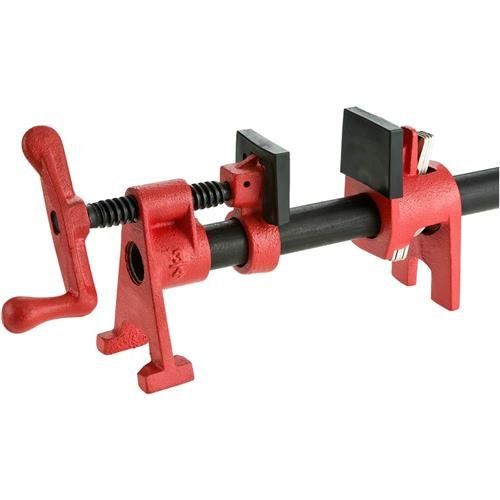
Pipe clamps are an excellent choice if you need a heavy-duty grip. They’re a little different to set up—you buy a set of clamp fixtures to attach onto a 1/2 or 3/4-inch iron pipe. It sounds complex, but this way, you can customize the clamp by using a longer or shorter pipe. This also makes them easy to store, as you can simply take off the fixtures when you’re done.
As you buy fixtures and piping, consider how large-scale your project is and how much pressure you need.
Bar Clamps
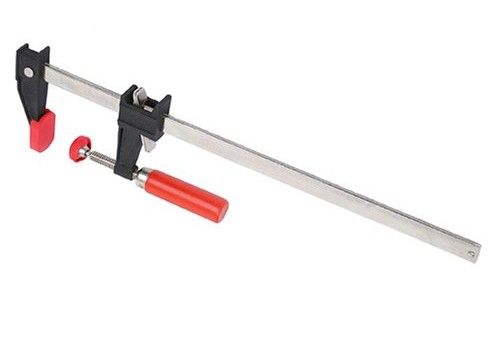
Heavy-duty bar clamps are designed like quick clamps, just without the bulky handle. They have parallel jaws to exert immense, even pressure across the work surface. This lessens the chance that parts bow or warp.
Use bar clamps for large glue-ups on tabletops and cabinets. Adjust the jaw opening as you need for a larger or smaller workpiece, and make quick adjustments to the width of the jaws with a smooth-sliding mechanism.
C-Clamps

C-clamps are a top choice for metalworkers. They’re not typically the first choice for woodworking, but you can use them to hold framing squares to straightedges or make repairs in tight spaces.
Because the pressure of a C-clamp is very localized, there’s a chance that wood can mar if the clamp goes on bare. Protect the wood by sandwiching it in between pads or scrapboards.
Specialty Clamps
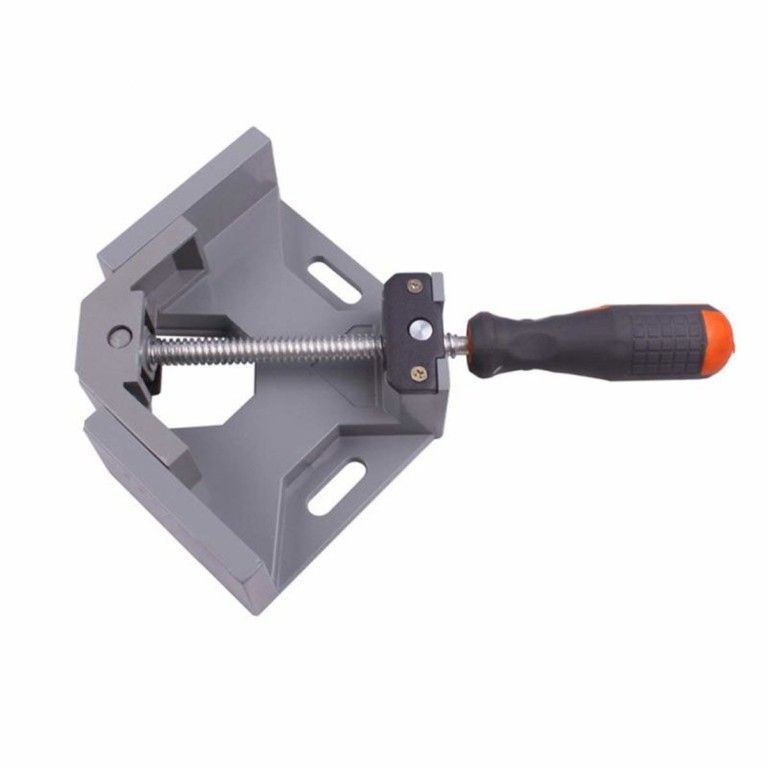
Specialty work-holding clamps can help you with unique orientations and specific tasks. The type in the picture above is used to hold two boards together at right angle, which can help you assemble drawers, cabinets, and other boxy pieces.
Other specialty clamps can help secure thin edges and veneers, clamp irregular shapes, or exert force through a large panel on flat surfaces. They’re not necessary for every project, but if you find yourself specializing in a niche type of project, they might be worth the investment.
Miter Clamps
Miter clamps with screw handles give you a quick, accurate way to assemble right-angle butt joints, miter joints, or T-joints. You might use them to build cabinet face frames or picture frames, just to name a few projects.
As you use miter clamps, apply even pressure and keep everything square. If you’re using glue, checking the shape before it sets will help you keep the joint seamless and sturdy.
Three-Way C-Clamps
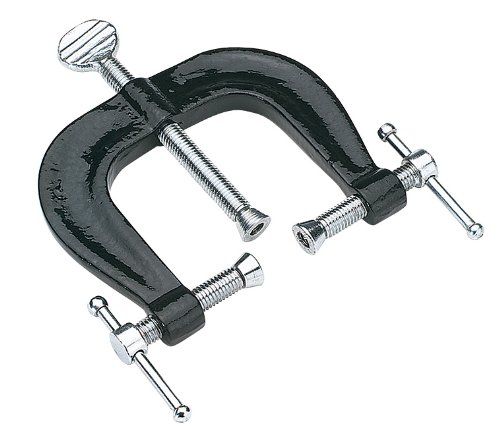
A three-way C-clamp has three screws that secure face frames to cabinets. The fit can stay tight and even since you apply force from multiple directions simultaneously.
When you use these clamps, protect the wood with pads or scrap to prevent damage, and adjust the screws evenly so pressure stays balanced. Overtightening can cause warping and damage to the workpiece.
Strap Clamps
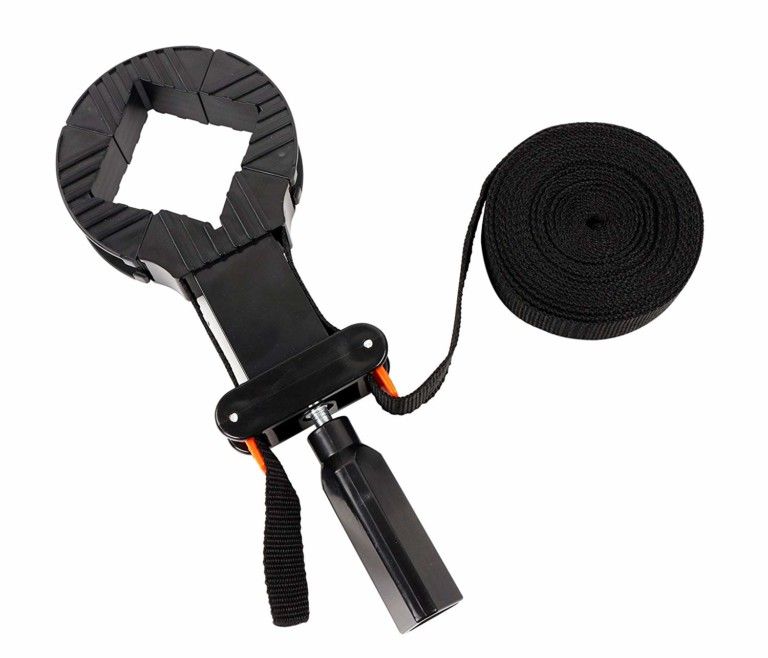
Strap clamps, web clamps, and bands can help you secure irregular assemblies like stools, chairs, and tables. They use a long, flexible strap that conforms to various shapes and tightens with a wrench or ratchet mechanism.
You may use a strap clamp to glue cylindrical objects, apply even pressure around curved surfaces, and assemble pieces that are tapered or angled. As you use the clamp, protect corners and edges with extra padding so the strap doesn’t leave marks.
This information was originally presented by This Old House TV.
